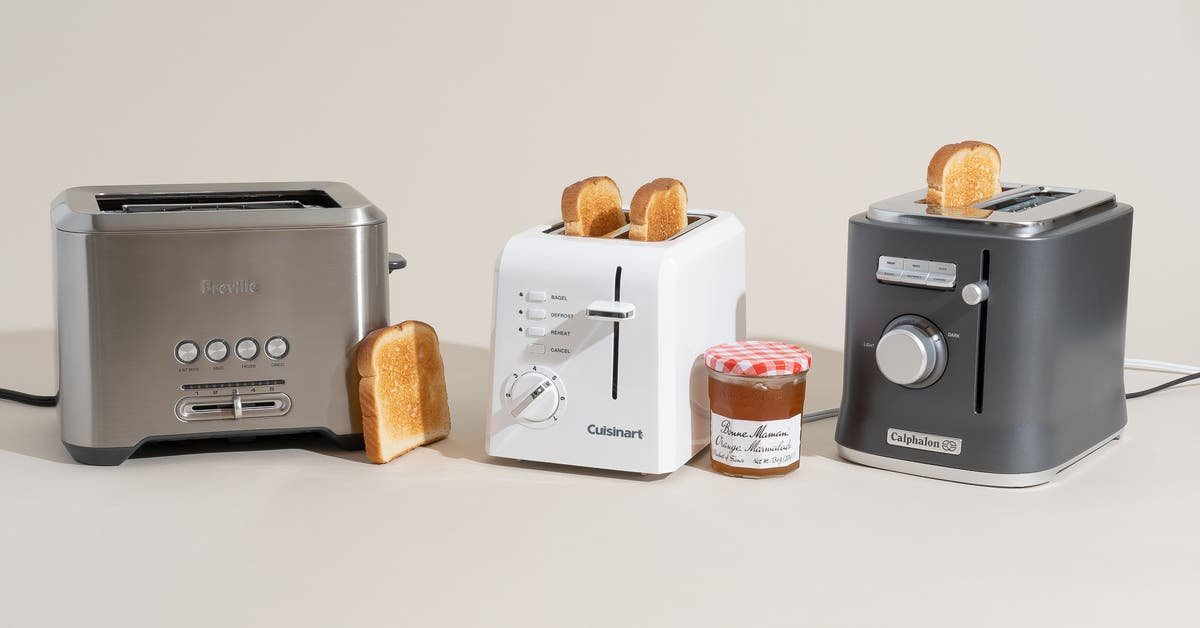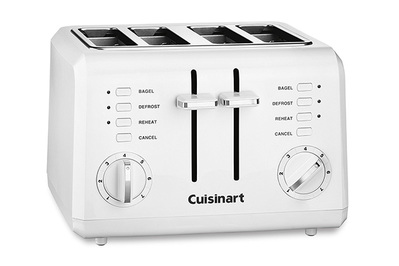
It’s a familiar story. You finally splurge on an expensive toaster, hoping it will make the toast of your dreams every day without fail. But after a few years, the machine starts getting spotty—or goes kaput. This is frustrating—and costly!
Unfortunately, no matter how much you spend, toasters aren’t made to last like they once were. That’s why we recommend the relatively inexpensive Cuisinart CPT-122 2-Slice Compact Plastic Toaster.
After toasting mountains of carbs in 32 toasters over the years, we think the Cuisinart offers the best balance of performance, quality, and features without asking you to overspend. We can’t guarantee it will toast evenly over time or last for decades (few modern toasters do). But we do think you’ll get your money’s worth.
To understand why most toasters seem prone to failure, we reached out to the Department of Materials Science and Engineering at The Ohio State University. A group of dedicated students disassembled two of our recommended toasters, as well as some vintage toasters, to run analyses on them. The big takeaway isn’t a huge surprise: The delicate electronics and cheaper components found in most modern toasters leave a lot of room for things to go wrong over time. There are a number of variables that can cause a toaster to fail, and it’s hard to predict an exact lifespan. But we recommend spending only what you think is reasonable for something that may last you roughly five years (and knowing that yours could last for longer or shorter than that). You may also want to consider getting a toaster oven instead—they’re far more versatile than a slot toaster, and, in our experience, they’re also more reliable.
Our pick
This inexpensive, ordinary-looking toaster browned bread more evenly than almost any other model we tested. Toasters aren’t known for their longevity, so we like that the Cuisinart is covered by a three-year warranty.

This four-slot toaster consistently browned bread as evenly as its two-slot counterpart. If you have the space, however, we recommend opting for a more-versatile toaster oven instead.
The Cuisinart CPT-122 2-Slice Compact Plastic Toaster and its four-slot version, the Cuisinart CPT-142 4-Slice Compact Plastic Toaster, both produced some of the finest, most evenly browned bread of all the toasters we tested (this was true in multiple rounds of testing over several years, with more than one of the same model). The Cuisinarts offer a wide range of settings and easy-to-use controls, and they remain cool to the touch batch after batch. That said, we know from research we commissioned that the heating element wires in modern toasters are not as strong as they could be, making them more susceptible to breakage over time. We’ve also read some customer reviews indicating there may be some quality-control issues causing the Cuisinarts to toast unevenly (though we haven’t had any issues with the four models we’ve been long-term testing—two since 2018 and two since 2020). That said, none of these issues are unique to Cuisinart toasters—most competing models seem to be similar, even the more expensive ones. And the Cuisinarts are covered by a generous three-year warranty (versus the one-year warranty that comes with most other toasters), so you have the option to return yours if you end up getting a lemon.
Upgrade pick

This expensive model toasts bread exquisitely. And its design is elegant, so it looks great on a counter. But it still has some of the pitfalls of cheaper toasters, so it may not last long enough to justify its high price.
The stainless steel two-slot Breville BTA720XL Bit More Toaster produced the most consistent toast of any model we tested—golden brown all over with no white patches or lines—even after we made several back-to-back batches. It also has a toast-saving “A Bit More” button (which allows you to add a little more time to an underdone slice) and a “Lift & Look” lever (which lets you peek at the doneness of your slice without interrupting the toasting cycle). And while we haven’t experienced this in our own long-term testing, we’ve read some customer reviews that say this model begins toasting unevenly after a year or two of use. Based on our research, we know that paying more doesn’t always translate to better quality. The Breville is a better-looking toaster with more features and complex circuitry. But it doesn’t have superior heating elements or better-quality electrical components than the Cuisinarts, which cost significantly less. That said, both the Breville and Cuisinart toasters are made well enough that you can reasonably expect them to last about five years (it could be longer or shorter, but the lifespan depends on how the circuitry and the heating elements hold up). Just keep this in mind when deciding whether to spend more on the Breville.
Credit : Source Post






